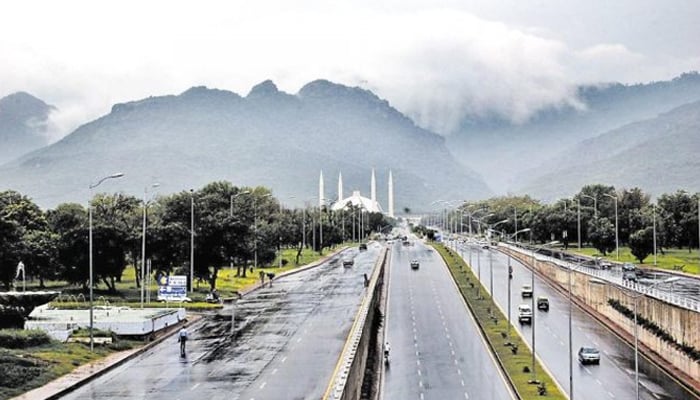ISLAMABAD – The Pakistan Meteorological Department (PMD) has predicted scattered light rain for Islamabad and parts of Pakistan on Monday night.
As per the synoptic situation, a trough of westerly wave prevails over western parts of Pakistan. It is likely to persist in northern parts till Tuesday.
Under these conditions, rain with snow over the mountains is expected in Khyber Pakhtunkhwa on Monday night.
Light rain/drizzle is likely in Gilgit-Baltistan, Kashmir, Islamabad, Potohar region and upper Punjab.
Cold and dry weather is expected in Islamabad and most parts of Pakistan on Tuesday and Wednesday.
Extremely cold weather is likely in northern areas and north Balochistan.
Fog update for Pakistan
Dense fog/smog is likely to persist in Islamabad, Punjab (Rawalpindi, Attock, Chakwal, Bahawalpur, Sahiwal, Okara, Kasur, Lahore, Sialkot, Narowal, Gujranwala, Jhelum, Mangla, Faisalabad, Jhang, Sargodha, Mandi Bahauddin, Toba Tek Singh, Khanewal, Multan, Khanpur, Rahim Yar Khan, Hafizabad, Bhakkar, Layyah, Dera Ghazi Khan and surroundings), upper Sindh and plain areas of Khyber-Pakhtunkhwa during morning and night hours.
Dense fog/smog may force the closure of Motorways and disrupt traffic on other inter and intra-city roads including the National Highway.
In Islamabad, the minimum temperature will likely remain between 00-02 C on Tuesday and -01-01 C on Wednesday.
Meanwhile, cold and dry weather prevailed over most parts of the country and very cold in northern areas during the last 24 hours.
Dense fog/smog prevailed over plain areas of Punjab, Khyber Pakhtunkhwa, upper Sindh and Islamabad.
However, rain with snow over mountains occurred in north Balochistan.
Rainfall (mm):
Quetta (Samungli 11, Sheikh Manda 07), Khuzdar 07, Kalat 03 and Barkhan 02
Snowfall (Inches):
Ziarat 03
In Islamabad, the minimum temperature was recorded at 01 C.
Relative humidity during the evening was recorded at 70 per cent.
Leh remained the coldest place in the country where mercury dropped 11 C below freezing.
Dense fog/smog forced the closure of portions of Motorways and disrupted normal vehicular movement on the National Highway and other inter and intra-city roads.
It also affected flight operations and the schedule of passenger trains.










